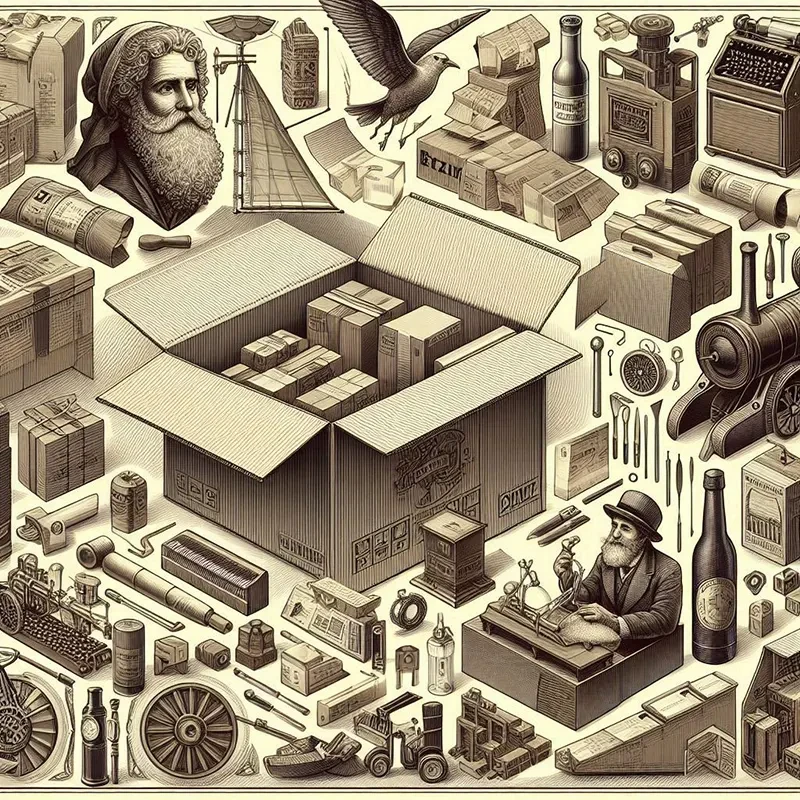The Origins and Historical Development of Boxes
Boxes have become an indispensable part of global transportation, storage, and packaging processes. However, the history of this practical and durable packaging material dates back quite a long way. While the origins of boxes trace back to ancient times, modern box production is shaped today by technology and innovation. In this article, we will provide a detailed examination of the historical development, evolution, and role of boxes in today’s packaging industry.
The First Use of Boxes
The earliest examples of boxes date back to around 3000 BC, as recorded in historical texts. Ancient Egyptian and Mesopotamian civilizations produced the first types of boxes, which were recognized for their portability and durability. These early boxes were typically made from natural materials like stone, ceramics, or wood and were used to facilitate the organized transportation of goods as trade expanded.
Initially, boxes were used to protect and transport luxury items. During this period, the most common materials for transportation and storage were heavy and durable wood. However, since these materials were expensive and difficult to transport, there was a gradual shift towards seeking lighter and more practical solutions.
The Industrial Revolution and the Modernization of Box Production
The Industrial Revolution marked a significant turning point for box production. By the late 18th century, the speed of production processes increased, and new materials were introduced into box manufacturing. Cardboard and corrugated fiberboard, in particular, became widely used, sparking a revolutionary change in box production.
The popularity of cardboard grew due to its lightweight, durability, and cost-effectiveness. This led to a major transformation, especially in the retail sector, as cardboard boxes became an essential material for packaging. By this time, cardboard and corrugated boxes were commonly used in factories, warehouses, and logistics processes.
Box and Packaging Technology in the 20th Century
The 20th century saw significant technological advancements in box production. In the 1950s, automated production lines increased the speed and efficiency of box production, reducing costs. At the same time, digital printing technologies were introduced. The use of colorful prints and logos on packaging helped brands make their products more visible and appealing.
Additionally, packaging technologies became more durable and environmentally friendly. As environmental concerns grew, the use of recyclable cardboard and corrugated materials increased, promoting both efficiency and sustainability in the logistics sector.
The Development and Sustainability of Boxes Today
Today, box production is largely driven by sustainability principles. The use of recycled materials, biodegradable plastics, and production processes that generate less waste has increased environmental responsibility within the packaging industry. Additionally, smart packaging systems and minimalist packaging designs have further optimized logistics processes.
With increasing environmental awareness in the logistics and retail sectors, there has been a shift towards developing more efficient, durable, and eco-friendly packaging solutions. Boxes are now not only used for transportation and storage but also play a significant role in enhancing brand recognition and improving customer experience.
The Future of Boxes: Smart Packaging and New Technologies
The future of boxes will be shaped by technological innovations and sustainability-focused developments. Smart packaging technologies, such as RFID tags and sensors, will further optimize transportation and storage processes. Additionally, 3D printing technology will allow for the rapid production of custom boxes for any product, revolutionizing the packaging industry.
Consumer demand for eco-friendly solutions is driving the shift towards more sustainable packaging. In the future, there will be a greater focus on biodegradable materials and the reduction of plastic use, minimizing environmental impacts.
The History and Future of Boxes
The history of boxes represents the beginning of many innovations related to transportation. From the simple materials initially used to today’s advanced and sustainable solutions, boxes have undergone significant evolution over time. The evolution of boxes has contributed not only to transportation but also to developments in storage, logistics, retail, and eco-friendly practices. The future of boxes will offer more efficient, environmentally friendly, and functional solutions, focusing on sustainability, innovative technologies, and productivity.
Keywords: box history, box evolution, packaging technology, industrial revolution, cardboard box, sustainable packaging, logistics solutions, eco-friendly packaging, smart packaging, box production

